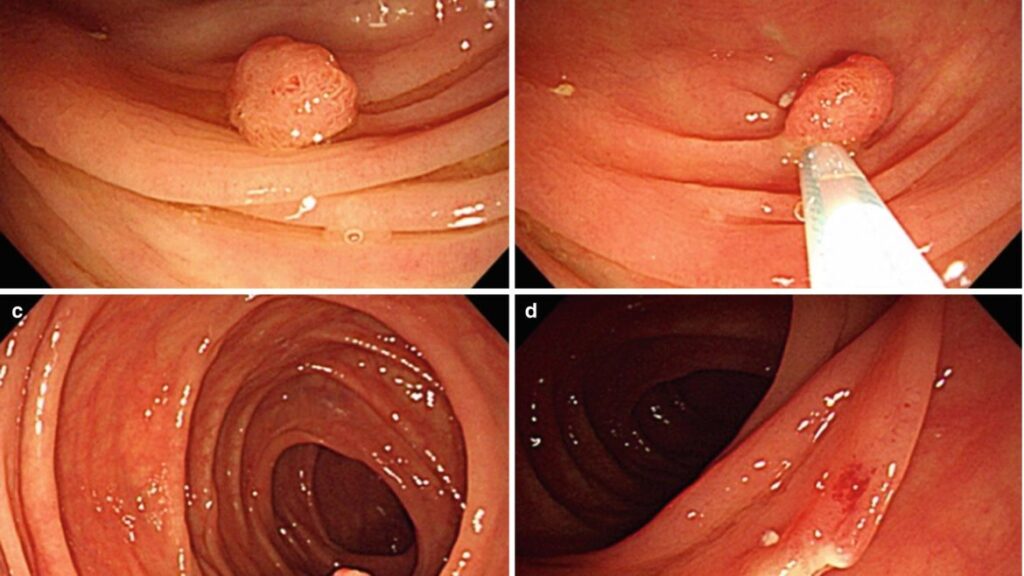Polypectomy

A polypectomy is a surgical procedure that removes polyps – small tissue growths that can develop in various parts of your body, particularly in the uterus or cervix. This common procedure helps doctors check if polyps are harmless or potentially harmful, and can also relieve symptoms like irregular bleeding that polyps sometimes cause.
What are Polyps?
Polyps are extra tissue that grows on the lining of organs:
| Type of Polyp | Location | Common Symptoms |
|---|---|---|
| Endometrial | Uterus lining | Irregular bleeding |
| Cervical | Cervix | Spotting after intercourse |
| Endocervical | Inside cervical canal | Bleeding between periods |
Why Would You Need a Polypectomy?
Common reasons include:
- Abnormal bleeding
- Infertility issues
- Irregular periods
- Preventive care
- Suspicious growth found during check-up
Types of Polypectomy Procedures
Office Polypectomy
- Done in doctor’s office
- Usually quick procedure
- Local anesthesia
- Short recovery time
Surgical Polypectomy
- Done in hospital
- General anesthesia
- More complex cases
- Longer recovery needed
Before the Procedure
Your doctor will:
- Review your medical history
- Perform physical examination
- Order necessary tests
- Discuss procedure options
- Explain recovery process
| Preparation Steps | Why It’s Important |
|---|---|
| Fasting instructions | Safety during anesthesia |
| Medication review | Prevent complications |
| Pre-op tests | Ensure readiness |
| Discussion of concerns | Mental preparation |
During the Procedure
What happens during a polypectomy:
- Area is cleaned and prepared
- Anesthesia is administered
- Special tools are used to remove polyp
- Tissue is collected for testing
- Procedure typically takes 15-45 minutes
Recovery Process
Immediate Recovery
- Brief observation period
- Vital signs monitoring
- Light cramping normal
- Discharge instructions given
At Home Recovery
- Rest for 24-48 hours
- Light activities allowed
- Mild discomfort normal
- Follow-up appointment scheduled
Expected Timeline
| Time Period | What to Expect |
|---|---|
| Day of procedure | Minor cramping |
| 1-2 days after | Light spotting |
| 3-7 days | Return to activities |
| 2 weeks | Follow-up visit |
| 4-6 weeks | Full recovery |
Possible Side Effects
Common side effects include:
- Light bleeding
- Mild cramping
- Temporary discharge
- Slight discomfort
When to Call Your Doctor
Contact your healthcare provider if you experience:
- Heavy bleeding
- Severe pain
- Fever
- Unusual discharge
- Strong cramping
Success Rates and Outcomes
Most polypectomy procedures are successful:
- High success rate
- Low complication risk
- Quick recovery
- Symptom improvement
- Preventive benefits
After Care Tips
Do’s
- Rest as needed
- Take prescribed medications
- Keep follow-up appointments
- Report concerns promptly
- Resume activities gradually
Don’ts
- No heavy lifting
- Avoid strenuous exercise
- No tampons initially
- No intercourse until cleared
- Don’t ignore unusual symptoms
Long-term Care
| Follow-up Care | Timing |
|---|---|
| First check-up | 2 weeks |
| Result review | 2-3 weeks |
| Regular screening | As advised |
| Annual check-ups | Yearly |
Prevention Tips
To reduce polyp risk:
- Regular check-ups
- Healthy lifestyle
- Hormone balance
- Weight management
- Stress reduction
Common Questions
Is the procedure painful?
Most women experience minimal discomfort during and after the procedure.
When can I return to work?
Most women return to work within 1-2 days.
Will polyps come back?
They can, but regular check-ups help catch them early.
© 2024 Dr. Rubeena Zainab. All Rights Reserved.